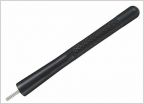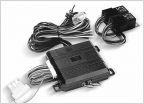-
Welcome to Tacoma World!
You are currently viewing as a guest! To get full-access, you need to register for a FREE account.
As a registered member, you’ll be able to:- Participate in all Tacoma discussion topics
- Communicate privately with other Tacoma owners from around the world
- Post your own photos in our Members Gallery
- Access all special features of the site
Any fellow survivalists utilize their truck?
Discussion in '2nd Gen. Tacomas (2005-2015)' started by Jez, Oct 31, 2011.
Page 35 of 181
Page 35 of 181


 Sky Silver SR5 make over part numbers guide. 285s and color match
Sky Silver SR5 make over part numbers guide. 285s and color match 2011 Tacoma 4x4 carrier bearing
2011 Tacoma 4x4 carrier bearing New UWS Low Profile Toolbox Showed up Today!
New UWS Low Profile Toolbox Showed up Today! 5 Inch Short Antenna Replacement for Toyota Tacoma
5 Inch Short Antenna Replacement for Toyota Tacoma Auto headlights
Auto headlights


































